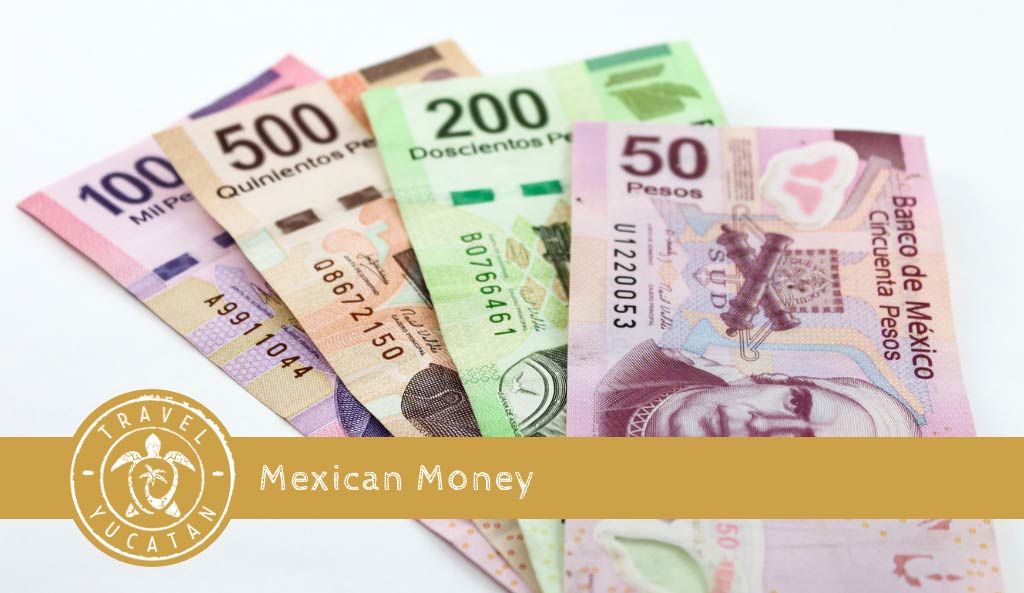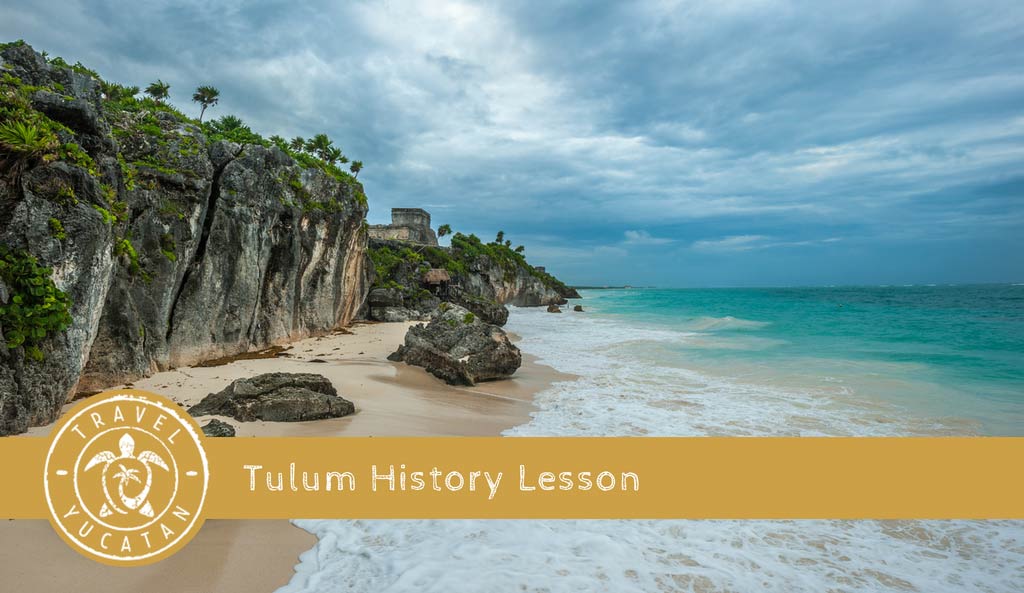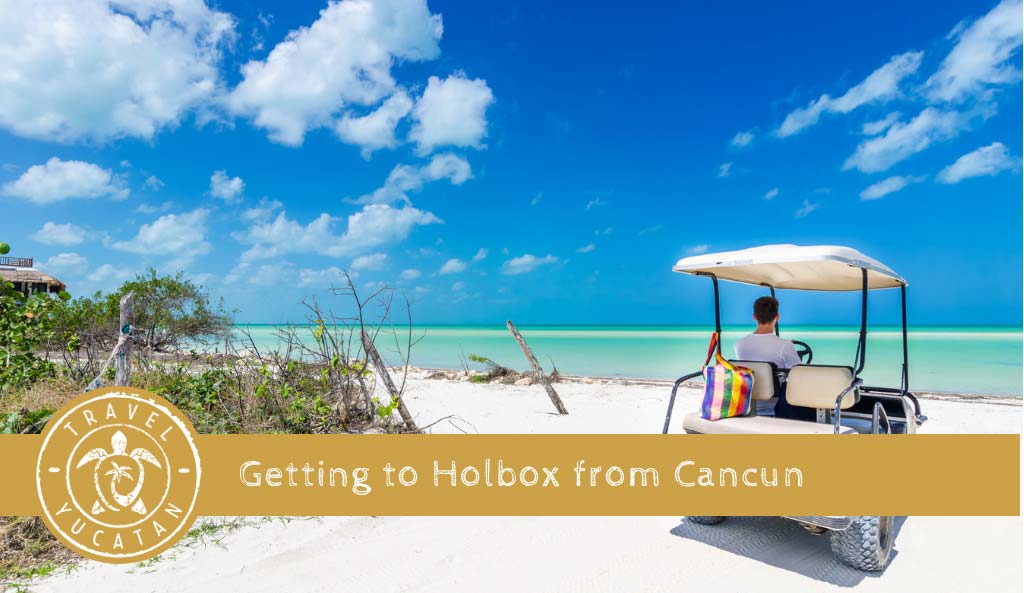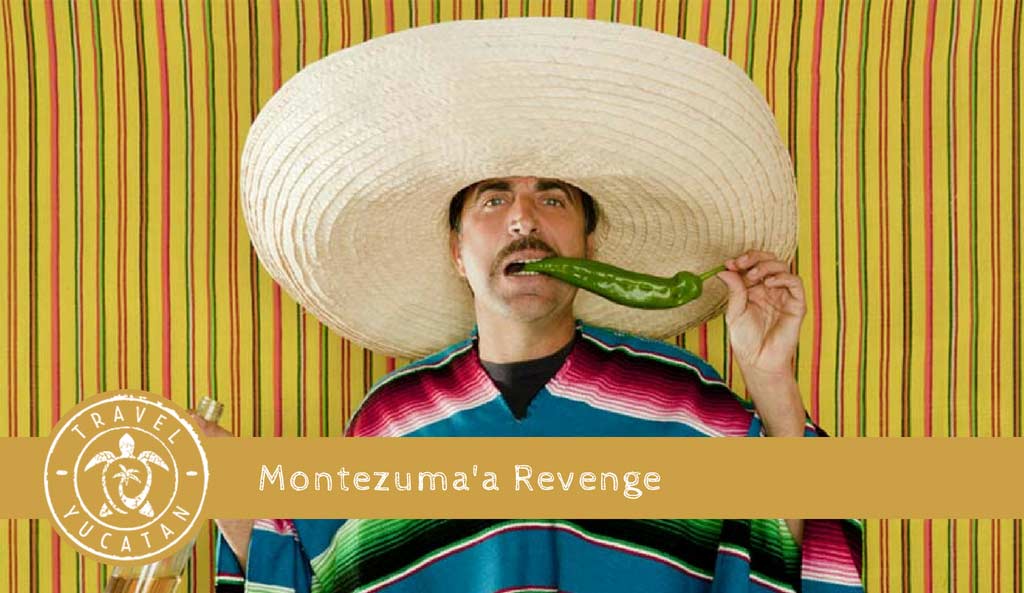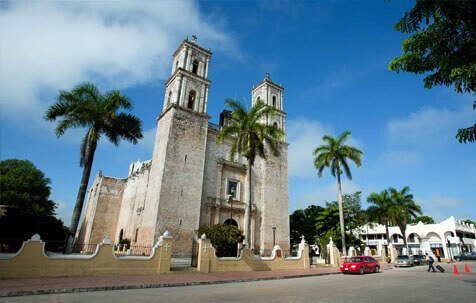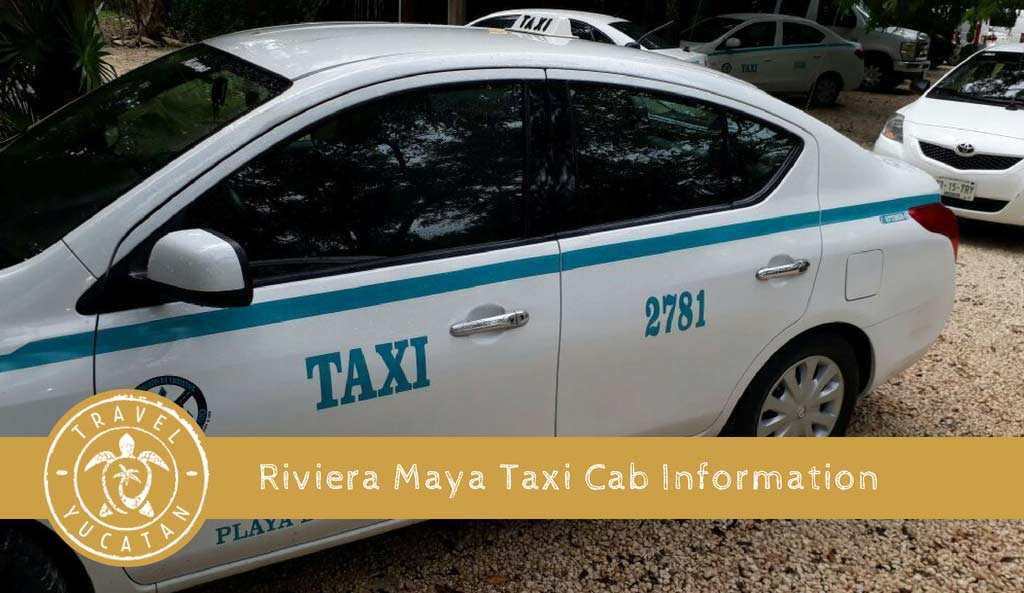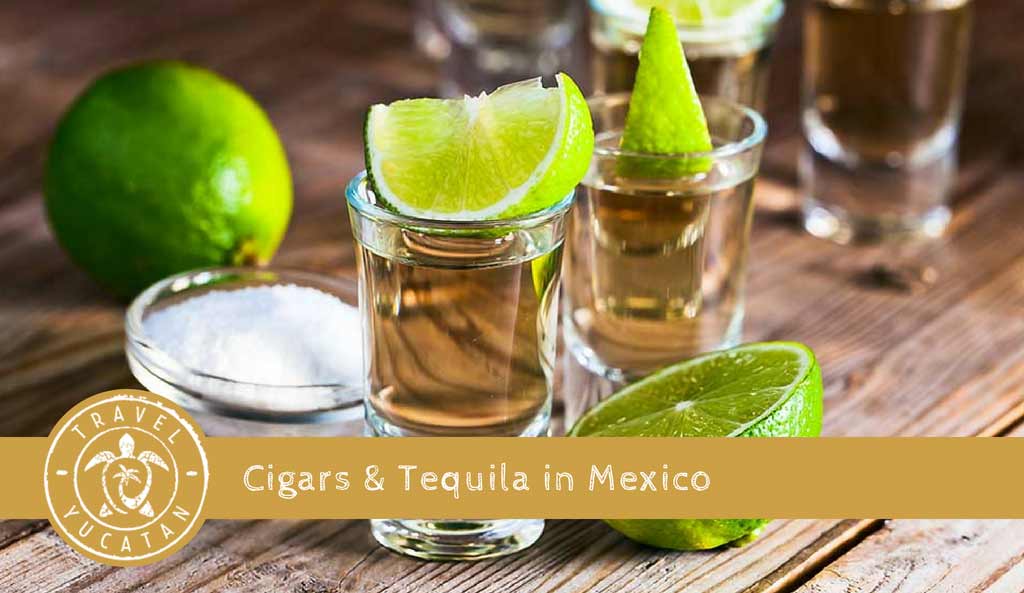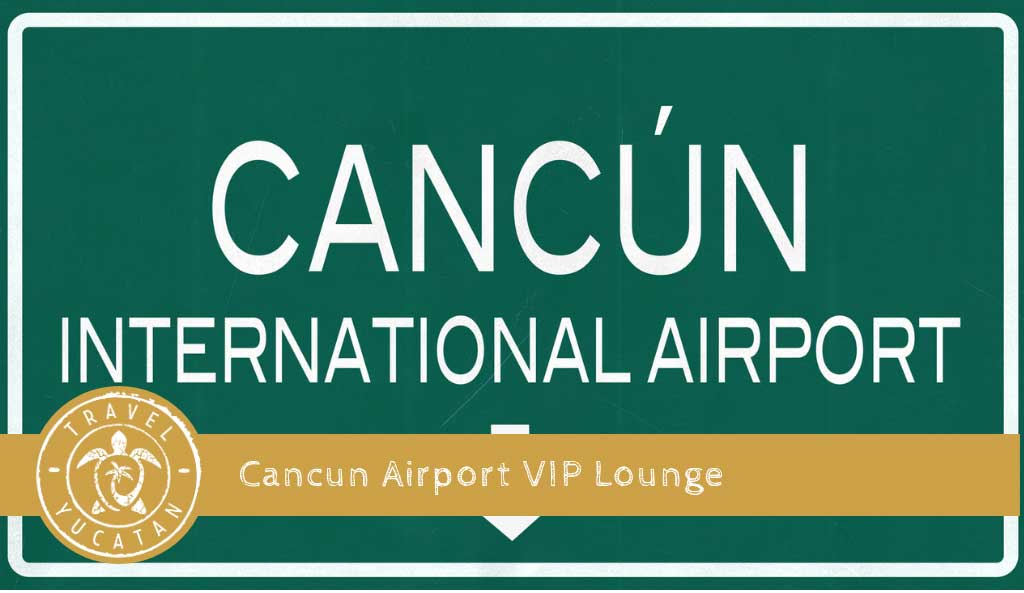Get Peso’s Before Traveling
| Mexican banks can exchange USD currency for non-customers [persons without a valid bank account, i.e.: tourist] but many banks have recently applied restrictions allowing only customers to exchange USD currency to pesos.Banks are limiting the amount an individual customer can exchange on a monthly basis forcing some Mexican vendors to stop accepting USD. These vendors will only accept payment in pesos.
ATMs dispense pesos. Money exchange stores [casa de cambio] are still offering USD exchange services. This could change at any time. Exchange your currency before you leave for Mexico taking Mexican Pesos only with you or be prepared to use ATMs. |
MONEY – WHAT TO BRING?
When traveling you want to get the best exchange rates, save the most money, and feel safe and secure carrying your money for the trip.
What you do varies according to where you are going. For example if you are staying at an all-inclusive on the Mayan Riviera then you need not take the precautions that you would if you were back-packing around the countryside.
Your choices are ATM, cash, credit cards, and traveler’s checks.
ATM – ADVANTAGES
- It is a compact solution.
- You can leave money safe in a bank back home so it can’t get stolen.
- Your money is earning interest while you travel.
- You get the better bank exchange rate, the same they give to credit card customers.
- You can get money after hours and on weekends.
ATM – DISADVANTAGES
- You have to depend on an ATM machine being open and working when you need it.
- You do not know what fees your bank is charging on international transactions, unless you check before you go.
- ATM machines cannot be found everywhere.
- If the card’s magnetic strip becomes damaged in any way and the card fails to work you could be in a bind.
- Daily limits.
- Sometimes the ATM machines are empty [as in no-money].
CASH – ADVANTAGES
- You have all your money with you and don’t have to worry about ATMs and credit cards.
- You know exactly how much you can spend.
- You get acquainted with Mexico’s money system faster.
CASH – DISADVANTAGES
- If you’re traveling for any length of time your cash-wad is too dangerous to carry around to be safe.
- If you lose it, it cannot be replaced.
- You eventually end up having money in every pocket and tucked away in numerous locations making things confusing.
CREDIT CARD – ADVANTAGES
- You need one to rent a car.
- Credit cards can be used for purchases as well as for getting cash.
- If your card is lost or stolen it is replaced quickly and you’re only covered for $50 worth of unauthorized purchases.
- You get the best exchange rate at the bank.
- You can purchase items and pay them off later. This is generally not a wise move, however, you have to consider you may not be able to return and purchase the item any time soon.
- With American Express you can write checks on your own checking account check for cash.
- You do not have cash advance interest fees.
- You can review your transactions when you receive your report.
CREDIT – DISADVANTAGES
- Some hotels only accept cash.
- PEMEX gas stations do not accept credit cards.
- It is extremely easy to overspend as people tend to get carried away when on vacation.
- You must pay off the card immediately when you get home or any savings you had in the exchange rate will be lost in interest payments.
- Your bank will charge you the extra high cash advance interest on transactions. If you don’t pay off the entire balance on your credit card on your next bill, the bank will not deduct all the money from your high cash advance balance. They can/will divide it between your purchase and cash advance balances. It could take an extended period to pay off.
- When on an extended trip there is nobody to pay the monthly credit card bill.
- There is a monthly limit on how much you can take out with an American Express card:
$1000 every 7 days with the green card
$2500 every 7 days with the gold card
$10,000 every 30 days with the platinum card.
NOTE: Keep ALL receipts from credit card purchases. It is a good idea to write on the receipt what you purchased as well as where you were.
TRAVELERS’ CHECK – ADVANTAGES
- If they are lost or stolen they can be replaced quickly, usually the same day if they’re American Express.
- Vendors like them when the exchange rate is good.
- When the dollar is rising quickly, some merchants will give you a better deal if you pay with travelers’ checks.
- It is like cash in that you have in your hands what you can spend.
- You can exchange your travelers’ checks for cash at your hotel.
TRAVELERS’ CHECK – DISADVANTAGES
- You get lower exchange rates than if you use a credit card or ATM card.
- There is a transaction fee involved.
- You have to keep track of the check numbers.
- Money exchange office offers a bad exchange rate.
- Passports are required to cash them.
RECOMMENDATIONS
Vacationers
For vacationers we recommend cash/credit cards. You need cash for making purchases, especially if you want to bargain. There are also numerous small exchanges that will take place and you will need cash for this. For major items use a credit card. Taxi cabs and the collectivo require cash.
Explorers
For explorers we recommend cash/credit card/ American Express travelers’ checks.
You need cash of course. But keep the majority of it at all times in travelers’ checks. Use the credit card for emergencies.
WAYS TO SEND MONEY TO MEXICO
BANKS
Those with bank accounts in Canada or the US can use their bank to send money abroad via bank wire service. Money is transferred electronically from one bank to another. Wire transfers usually cost around $45, regardless of the amount of money being sent, plus an additional charge for converting dollars into pesos.
To send money by wire transfer, the sender must have a Canadian or US bank account and the recipient must have a Mexican bank account. The sender must provide:
1. the name of the bank in Mexico which will receive the money
2. the address of the specific branch of the receiving bank
3. the ABA number or swift code of the Mexican bank
4. the account number and the name of the person who will receive the money.
Depending on the banks, which send and receive the money, this transaction usually takes one or two days.
C-DRAFT
A C-Draft is a form of money order, which is purchased at a bank. There is a minimum fee charged by the bank [it begins at around $11] and increases with the amount of money sent, plus a charge for converting to pesos.
To buy a C-Draft, the sender should give to the bank:
1. the name of the bank in Mexico which will receive the money
2. the address of the specific branch in Mexico
3. the name of the person who will receive the money
4. the name of the person sending the money.
The Canadian/US bank then issues a C-Draft to the sender, who then mails the C-Draft to the recipient in Mexico.
Once the person in Mexico receives the C-Draft in the mail, he or she can collect the amount indicated on the draft.
If the document is lost, the sender can recover the money from the bank at which the C-Draft was issued.
CASHIER’S CHECK
A cashier’s check costs around $3 at most banks, plus a charge for the currency exchange.
To buy a cashier’s check, the sender should give the bank:
1. the name of the person who will receive the money and
2. the name of the person who is sending the money.
The person who receives the cashier’s check must present it to a Mexican bank, which will not cash the check until it can verify the transaction with the foreign bank. This process sometimes takes several days.
DEBIT CARD
Regardless of the amount being sent, debit card transactions cost around $1, plus a charge for the currency exchange.
To send money by debit card, the sender must have a Canadian or US bank account and must obtain from the bank at least two debit cards, one for the sender’s personal use and one for the use of the recipient in Mexico. The sender needs only to provide the recipient with the card and the confidential PIN number.
INTERNATIONAL MONEY ORDER
If you do not have a bank account, money can also be sent through the mail in the form of an international money order. This can be purchased in any Post Office, which charges $3 for every $500 being sent, plus a fee for the currency exchange.
To buy a money order at the post office, the sender must provide:
1. the name and the address of the person who will receive the money
2. the name and address of the person who is sending the money.
The sender mails the money order to the recipient in Mexico, who must then present the money order to a bank in Mexico in order to receive the money.
There is a delay of a few days before the money order can be cashed, while the Mexican bank confirms the transaction with the institution, which issued the money order.
WESTERN UNION
Senders may also send money to Mexico via Western Union, which offers two types of electronic transfer.
MONEY IN MINUTES
Money in Minutes costs a minimum of $16, increasing with the amount of money being sent, plus a charge for currency exchange. To send money this way, the sender should go to a Western Union agency and provide the agent with:
1. the name, address, and phone number of the recipient in Mexico
2. the name, address, and phone number of the person sending the money.
The sender must then inform the recipient that the money is being sent and specify the location in Mexico where the recipient can claim the money.
MONEY TRANSFER
Money Transfer also costs a minimum of $16, increasing with the amount of money being sent, plus a fee for the currency exchange.
The sender must provide the Western Union agent with:
1. the name, address, and phone number of the person who will receive the money
2. the name, address, and phone number of the person sending the money.
After the sender has paid for the draft, Western Union sends the money to the central offices of Telegrafos de Mexico, where it arrives the next day, and from there on to offices in the smaller cities in two days. The recipient then is notified. The sender can include a ten-word message at no extra cost.
INTERNET
You can now transfer money over the Internet. To do this visit the Western Union web site.
MEXICAN MONEY
Zapata, Emiliano (1877-1919) was a legendary Mexican revolutionary leader and agrarian reformer. Born in San Miguel Anenecuilco in Morelos State, an illiterate tenant farmer of almost pure Indian blood, he recruited an army of Indians from villages and haciendas in Morelos. Under the rallying cry Land and Liberty they joined the Mexican revolutionist Francisco Madero in the 1910 revolt against the Mexican soldier-statesman Porfirio Díaz.
Madero assumed presidency in 1911 however Zapata and his followers soon rejected Madero who failed to uphold his word. Zapata then formulated his agrarian reform plan; known as the Plan of Ayala. This plan called for the land to be redistributed among the Indians.
With the Mexican revolutionary general Francisco [Poncho] Villa, Zapata marched on Mexico City, entering it the first of three times in 1914. The following year Zapata withdrew to Morelos where, still resisting, he later was ruthlessly assassinated by an agent of Carranza, a lowly Mexican statesman.
Although regarded as a pillaging bandit by his enemies, Zapata was idolized by the Indians as a true revolutionary reformer and hero; his life has inspired countless legends, movies and books. Viva Zapatista!
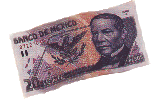 Juarez, Benito Pablo (1806-72), national hero and president of Mexico (1861-63 and 1867-72).
Juarez, Benito Pablo (1806-72), national hero and president of Mexico (1861-63 and 1867-72).
Juarez was born of Indian parents on March 21, 1806, near the town of Oaxaca and was educated in law.
He became governor of the state of Oaxaca in 1847 but was imprisoned when the Mexican general Antonio de Santa Anna seized the national government in 1853.
He escaped to the U.S. but returned to Mexico in 1855 to take part in the revolution that overthrew Santa Anna.
Juarez became minister of justice in the newly established government and instituted a series of reforms that were embodied in the constitution of 1857.
In 1858 Juarez became provisional president after the outbreak of a revolt but soon afterward he was forced to flee the national capital, Mexico City, and established a new seat of government in Veracruz. He initiated a number of sweeping reforms, including the reduction of the civil power of the Roman Catholic church by confiscating ecclesiastical property. He defeated the opposing forces in 1860 and 1861 then established his government in Mexico City where he was constitutionally elected president.
After five years of civil war and facing economic chaos Juarez suspended payments to foreign creditors. France, Spain, and Great Britain intervened, and landed troops at Veracruz. Juarez reached a settlement with Great Britain and Spain; those countries withdrew from Mexico, but the French remained and captured Mexico City.
Maximilian, archduke of Austria, the puppet of Emperor Napoleon III of France, was crowned emperor of Mexico in 1864. Juarez then moved his capital to the north and continued military resistance until Maximilian’s government fell in 1867.
Juarez returned to Mexico City and was reelected president. Juarez died of apoplexy on July 18, 1872, in Mexico City. He is regarded as one of the greatest heroes in Mexican history.
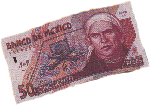 Morelos y Pavón, José María (1765-1815), Mexican priest,
Morelos y Pavón, José María (1765-1815), Mexican priest,
who led the independence movement after the execution of Miguel Hidalgo y Costilla.
Morelos was born in present-day Morelia, Michoacán. Ordained in 1797, he was a parish priest until he joined Hidalgo’s rebellion in 1810. Given a military commission, he soon gained control of a wide territory in central Mexico and by 1812 he was recognized as the leader of the rebellion.
He and his troops captured Acapulco in 1813. Later that year he sponsored the Congress of Chilpancingo, which issued a declaration of independence, promulgated a constitution. Morelos was appointed generalissimo of the insurgent government.
Royalist forces captured him in November 1815, convicted of heresy and defrocked by the Inquisition, he was then turned over to the church and executed.
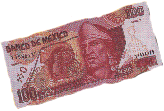 Nezahualcoyote was the son of Ixtlilxóchitl, King of Texcoco from 1409 until 1418. Defeated in battle by Tezozómoc, Ixtlilxóchitl retreated to the jungle where his enemies pursued him. A valiant struggle ensued when he was found and he was killed in full view of
Nezahualcoyote was the son of Ixtlilxóchitl, King of Texcoco from 1409 until 1418. Defeated in battle by Tezozómoc, Ixtlilxóchitl retreated to the jungle where his enemies pursued him. A valiant struggle ensued when he was found and he was killed in full view of
his young son, Nezahualcoyote, who was hiding in a tree. This heir to the throne of Texcoco
managed to escape the soldiers of Tezozómoc and found sanctuary across the mountains to the east.
As legend has it Tezozómoc had his soldiers ask every child in Texcoco, ‘Who is your king?’ When the little children answered either ‘Ixtlilxóchitl’ or ‘Nezahualcoyote,’ they were immediately butchered.
Several thousand children were put to death before parents taught their children to fear the name of Tezozómoc. In 1420, at the age of one hundred, Tezozómoc died and Nezahualcoyote came to rule the city of Texcoco until 1472.
To a considerable extent Texcoco’s strength was owing to the legacy of Nezahualcoyote. Not only was he renowned for his military exploits, Nezahualcoyote is recalled for his cultural refinement. Renowned for his philosophical verse, this “Poet King of Texcoco” was also a wise legislator and an impartial judge. In addition he was also an engineer who was instrumental in the construction of the great aqueduct, which brought water to Tenochititlán from the mainland and of a long dike across the lake.
He was a scholar and book collector, his Texcoco, “the Athens of Anáhuac,” had libraries housing thousands of manuscripts.
Nezahualcoyote died in 1472 and is remembered as one of the great Indian Kings.
 Juana Inès de La Cruz (1651-95), Mexican poet and scholar.
Juana Inès de La Cruz (1651-95), Mexican poet and scholar.
She was born in San Miguel and largely self-educated. She learned to read at the age of three. In her teens, she served as a lady-in-waiting at the court of the viceroy of New Spain. She was renowned for her beauty, wit, intelligence, and learning. After several years, she abandoned her court lifestyle to become a nun.
As a nun, Juana de la Cruz studied theology, literature, history, music, and science. She wrote poetry that earned her the sobriquet “The Tenth Muse”. Her writings, comprising lyric and allegorical poems and religious and secular dramas, were published in Spain between 1689 and 1700.
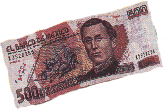 Ignacio Zaragoza was the Mexican general commanding the Mexican troops in the battle against the French.
Ignacio Zaragoza was the Mexican general commanding the Mexican troops in the battle against the French.
Shortly after the Spanish and British troops withdrew their armies from Mexico, the French army, began to march inland on its war of occupation. In Puebla a decisive battle was fought and won by General Zaragoza’a brave soldiers.
The dejected French invaders, many veterans from more glorious days in Crimea war, retreated to lick their wounds in Orizaba.
May 5 – Cinco de Mayo – would be added to the national calendar of holidays in honor of the great Mexican victory.
Mexicans won the battle of Puebla that day, the French returned a year later with thirty thousand fresh troops, and after encircling Puebla and reducing the city to rubble with heavy bombardment, finally captured Puebla.
